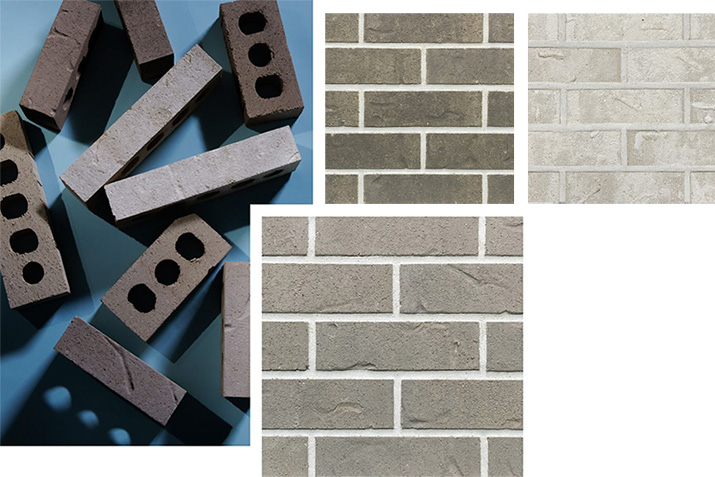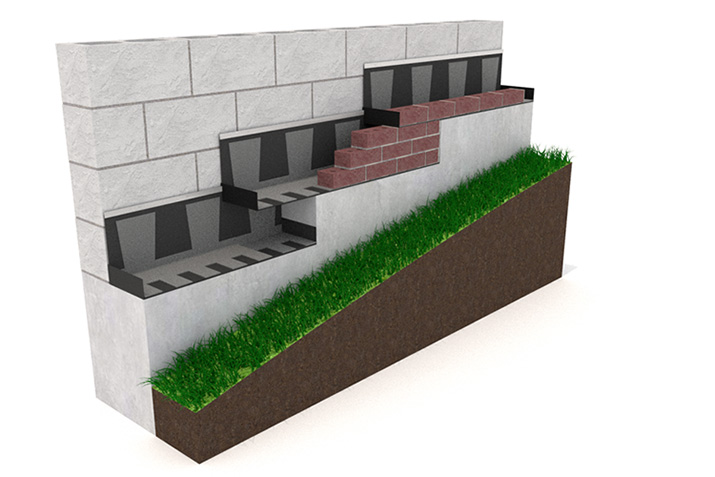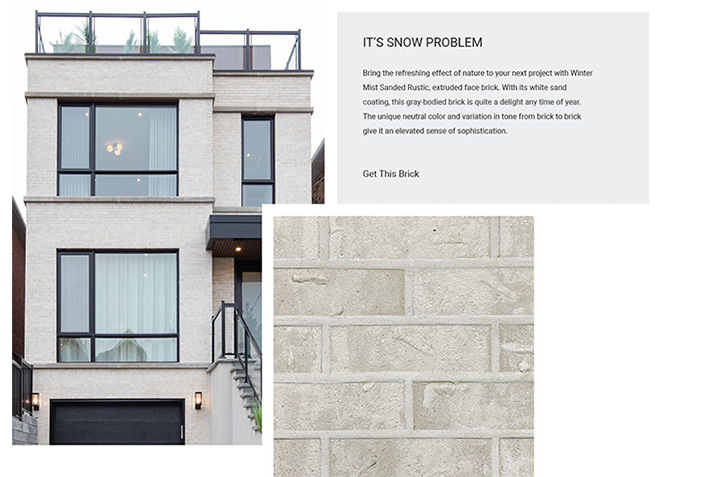Masonry
Product Spotlight: Introducing New Sanded Rustic Colors by The Belden Brick Company
June 6, 2025
The Belden Brick Company, renowned for its commitment to quality and innovation, expands its distinguished Sanded Rustic collection with the introduction of two exclusive colors: Dusty Gray and Rustic Gray. These new hues are meticulously crafted to meet the rising demand for natural, neutral tones in contemporary architectural design.
StonePly Stone Panels: The Ultimate Solution for Modern Stone Cladding
December 6, 2024
StonePly stone panels revolutionize traditional stone cladding with their unique blend of natural beauty, strength, and advanced engineering. Whether you’re designing a skyscraper or a boutique interior, StonePly offers unmatched benefits.
Enhancing Moisture Management in Masonry Construction: The Innovation of Mortar Net Solutions
August 23, 2023
Masonry construction, with its timeless charm and durability, is a cornerstone of architectural design. However, maintaining its integrity and longevity requires addressing the challenges posed by moisture management. This is where Mortar Net Solutions comes into the picture, revolutionizing the way we approach moisture control in masonry structures.
Introducing new brick colors: Beyond plain white, the Belden Brick Company expands design possibilities
June 15, 2023
The Belden Brick Company is introducing new brick colors that go beyond the traditional plain white brick, catering to the growing demand for lighter and whiter bricks in contemporary architecture and home design. The company is excited to present four distinct options: Winter Mist Sanded Rustic, Sedgemoor, Glacier White Smooth, and Glacier White Velour. These bricks offer a range of textures and finishes, from rustic and textured to smooth and sleek, making them popular choices for modern architectural styles.
No Masonry is Truly Waterproof
October 31, 2022
"No masonry is truly waterproof, whether the result of capillary action, absorption or construction error", says Gary Johnson in SmartSolutions, a Masonry Educational Series on mortarnet.com. "During the multi-decade life spans of typical high-quality structures, drainage in the cavity of a masonry veneer wall is necessary to minimize moisture damage and create a long-lasting, low-maintenance wall. Drying of the wall by promoting ventilation within the cavity is of increased importance, most recently due to the application of continuous insulation close to the exterior of the structure."
MortarNet™ with Insect Barrier™ - the original mortar dropping collection device
September 30, 2022
In masonry cavity walls, mortar collection above the flashing and weep hole levels is vital for proper masonry cavity wall performance and to prevent water damage. In today’s walls, it’s common to see a 2” cavity reduced to the minimum requirement of 1” with the inclusion of insulation, so the need for better ventilation is essential to keep the wall dry and trouble-free. MortarNet™ with Insect Barrier™ suspends mortar droppings above the flashing and weeps, so they stay clear and unobstructed. The patented Insect Barrier helps deter insects from entering the cavity through the weep holes. Its NEW design using a structural strand polymer mesh allows moisture to flow to the weeps and significantly greater airflow within the cavity to promote drying.
Ventilating the top and bottom of a cavity wall
October 27, 2021
Weep Vents are commonly placed directly on the flashing at the bottom of the wall, below finished floor and above finished grade. What may be new to some is that now, it is becoming more common to also place weep vents at the top of the wall, either just below the shelf angle (commercial or multi-story) or just below the facia and soffit of a residential structure.
Ventilating the top and bottom of a cavity wall
August 4, 2021
Weep Vents are commonly placed directly on the flashing at the bottom of the wall, below finished floor and above finished grade. What may be new to some is that now, it is becoming more common to also place weep vents at the top of the wall, either just below the shelf angle (commercial or multi-story) or just below the facia and soffit of a residential structure.
Rib Rock Landscape Block Provides Time and Costs Savings with Tightened Construction Schedule
December 9, 2020
County Materials’ Rib Rock Landscape Block covers more square footage with less material, providing strong structural integrity to meet tight construction schedules.
Concrete Masonry Meets Historic Design Requirements at a Cost-Effective Price
October 21, 2020
Located within the City of Muskego’s Downtown Redevelopment District, DeWinter Eye Care Center is a modern building that emulates historical features with the use of concrete masonry products manufactured by County Materials. Heritage Collection Designer Concrete Brick and Splitface Concrete Masonry Units were installed together to create a sophisticated, yet approachable curb appeal that meets the design requirements set by the Muskego City Council.
Heritage Collection™ Designer Concrete Brick Offers Value and Design Versatility for New Home Construction
May 25, 2020
Heritage Collection™ Designer Concrete Brick from County Materials was specified for this Wrightstown, WI home because of its proven service life and added value when compared to alternative materials. Higher resale and property values are additional reasons why concrete masonry construction is an excellent investment. Read the Case Study today.
Masonry Stain
August 14, 2019
Stains specifically engineered to enhance the textures of brick and stone. Wide range of solutions from translucent stains allowing surface textures to show, to opaque stains covering flaws beautifully. Ideal for blending new additions, covering graffiti, even restoring historic buildings.
Importance of a Well-Drained Masonry Wall
November 1, 2018
No masonry is truly waterproof, whether the result of capillary action, absorption or construction error. During the multi-decade life spans of typical high-quality structures, drainage in the cavity of a masonry veneer wall is necessary to minimize moisture damage and create a long-lasting, low-maintenance wall. Drying of the wall by promoting ventilation within the cavity is of increased importance, most recently due to the application of continuous insulation close to the exterior of the structure.
Paint vs. Stain: know the difference
April 6, 2018
Stains penetrate and bond to surfaces, while remaining aspiratory - allowing moisture vapors to escape. Paints, however, rest on top of the surface, trapping moisture between the paint and the surface. In cooler climates, freeze/thaw cycles cause moisture to expand and contract, making paint blister and delaminate - ultimately leading to paint failure or what we call 'paintenance.'
Brick Stairways
November 20, 2017
It is a well-known fact that first impressions are lasting. Belden Brick adds an elegant touch to your project's entryway and represents a classic look of beauty and grace.
Special Brick Shapes
October 3, 2017
Architects and designers need not let their creativity be stifled by existing ideas of what a special shape brick should look like. We invite you to explore the artistic impact that special shape brick can have on your design.
Top Interior Design Ideas with Masonry Veneers
September 19, 2017
As manufacturers offer a variety of full and thin veneer masonry product options, it’s easier than ever to create stunning features for new home and business construction or remodels, all at an affordable price. In addition, masonry veneer applications can increase home and property values, all while reducing insurance costs due to their high fire and moisture resistance.







